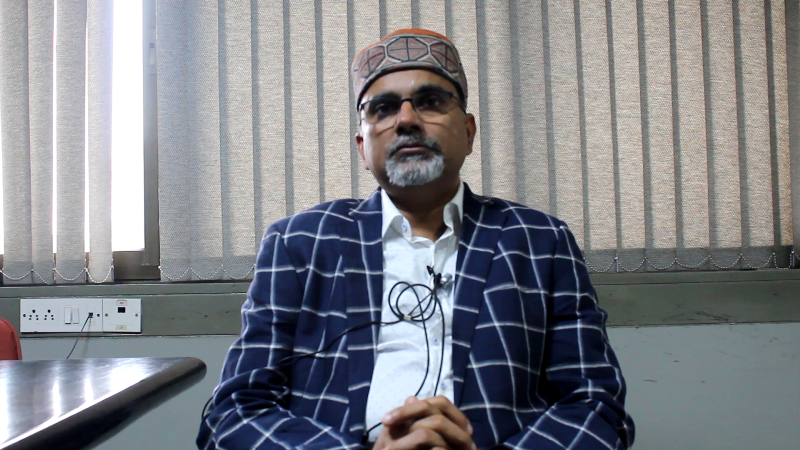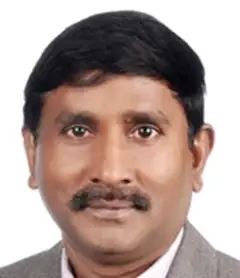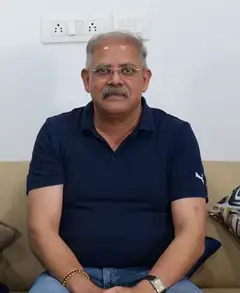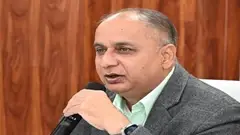
The Energy and Resources Institute (TERI) is a research institute in New Delhi that specializes in the fields of energy, environment and sustainable development. In the wake of the World Sustainable Development Summit (WSDS) on diverse aspects of global sustainable development Dr. Lakshmi Unnithan, Editor, Agriculture World/Krishi Jagran had a One to One Interaction with Mr Alok Adholeya, Senior Director, Sustainable Agriculture. Dr Alok Adholeya leads the team on mycorrhizal research, micropropagation technology, Nanobiotechnology and plant tissue culture and molecular biology.
1. Walk me through the huge Volume of work in the field of Sustainable Agriculture?
TERI has been doing Research since 1974 in all areas of plant productivity enhancement, developing new varieties conventional and molecular, GMOS, tissue culture and micropropagation technology. TERI also works directly with the farmers in hilly regions in providing them quality-planting material, helping them with production technology and linking the market.
2. You lead the team on mycorrhizal research, micropropagation technology, nanobiotechnology, plant tissue culture and molecular biology. Was Science a favourite subject from your school days?
Very interested with plant diseases from very early days finally landed me up in a Masters in Plant Pathology and from there to now where you see me.
3. What got you interested in these diverse yet specific fields and which field excites you the most?
Field which excites the most was the power of microorganisms. Even though they are below ground, they do a great deal of job that we aren’t aware of.
4. Could you throw some light on the collaborating partners in your study in these fields?
TERI Partners with institutions, universities, government & non-governmental organizations all over. They are all symbiotic relationships that benefit each other. We work on Contract Research mode, in specific problems for the industry and developing new technologies for them. The licenses, fees and safe environmental products bring the revenue to TERI.
5. Your career has been largely devoted to finding and developing ways to harness the power of microbes? What spurred this study and its possible real world applications in agriculture? Do they have the potential to replace chemical fertilizers?
Particularly interested in Mycorrhiza because they allow plants to draw more nutrients and water from the soil. They also increase plant tolerance to different environmental stresses. Moreover, these fungi play a major role in soil aggregation process and stimulate microbial activity. 85 percent of crops are benefitted by application of mycorrhiza. They can sustain very high and very low temperatures. TERI has developed the mass production technology and licensed to industries and farmers. Millions of farmers are using our product and it’s under the brand name Mycozoom. Large Scale trials of this product have been conducted in Maharashtra, Rajasthan and Kerala on vegetable crops, sugarcane, grapes, oilseeds and pulses.
5. Your views on Biofertilizers and its efficiency in improving yields, with greater importance been given to Organic and ZBNF?
50 percent of the needs of the plant could be met with Biofertilizers like mycorrhiza. Analysing the needs of the plants and using the correct biofertilizers is the norm.
6. What is your assessment of the current status of nanobiotechnology in the global as well as Indian Scenario?
Nano biotechnology is quite new and Nanobiotechnology products are safe and protein coated. The cost of production is very low, because the energy comes from plants, microorganisms and their extracts. If they are Synthetic they aggregate, and if they are biologically synthesized they do not aggregate. However, the synthesis techniques are generally costly in Nanotechnology.
7. TERI Does Nano biotechnology research and has a TERI Deakin Nano biotechnology Centre-Gurgaon. Could you explain about this centre?
THE TERI-DEAKIN Nanobiotechnology centre came into existence in 2011 at TERI’S green campus in Gurgaon. The collaboration was to use the strength of two institutions. We make use of TERI’S specialization in the fields of plant sciences, microorganism, agriculture, biotechnology and Deakin’s specialization in the material sides. At Gwal Pahari there are multiple disciplines that work together like chemists, physicist, biologists, agriculturists who work on research platforms. We also support PHD students who take some additional responsibility of the research work. They are paid stipend and travel allowance of up to 3000 dollar for outstation paper presentation. At present our work strength is 140 researchers, 140paper and roughly 15-20patents. At present we stand in time where we have researched for over 3 years and standardized protocols and field research and we are ready to commercialize the environment safe prototypes for mass manufacturing and now there are robust pipelines in process.
8. How are toxicity issues in nanomaterials met with and what is the regulatory scenario of food and agri-nano products in India?
Biologically synthesized is perfectly safe for the environment.India is coming up with new regulatory policies. Nanotechnology is done all over the globe and Nanobiotechnology is done only in TERI, in India and Korea, Taiwan, America and Japan.
9. Could you explain the kind of Research happening at TERI with respect to Nanobiotechnology?
TERI is already into mass production of MyCorrhiza. TERI's Centre for Mycorrhizal Research (CMR) has successfully translated the nutrient-tapping potential of this system and developed a technology that eventually produces mycorrhizae-based biofertiliser. Research for multiple products like fertilizers, fungicides, natural colours and their efficiency trials etc are always been done at TERI. They have made a reactor, which makes nano salts for producing microrganisms. TERI is effectively translating this lab based research into practical applications and they are ready with prototypes, very well validated over the last two three years.
12. How effectively could you translate this lab based research into practical applications?
TERI is effectively translating the lab based research into practical applications and they are ready with prototypes, very well validated over the last two three years and is ready to go with industries.
13. What is the future direction of work that is needed in the area of Nanobiotechnology?
Much more research is to be done in Food, Application systems, Precision delivery systems and carrier development.
14. Micropropagation Technology Park is one of the largest tissue culture production units in North India? Could you explain a bit about its centre in terms of capacity?
For mass propagation of economically important plant species, including forest trees, fruit and cash crops, medicinal and aromatic plants, and so on the TERI's facility at Gwal Pahari, was launched in 1989.
15. Kinds of work happening in the MTP centre?
TERI had supplied over 12.8 million plants to various state forest departments, non-governmental organizations, agro-based companies, and private growers. Micropropagation protocols for mass propagation of over 70 different species are available at the MTP Centre.
15. What are the future directions of your work that your department and you are intending to concentrate on?
Our department will delve more into application and technology development mode and minimizing environment footprint. Integrated practices are the key to maintain sustainable and safe environment.
We look forward to more interactions and collaborations in the future as well.















Share your comments